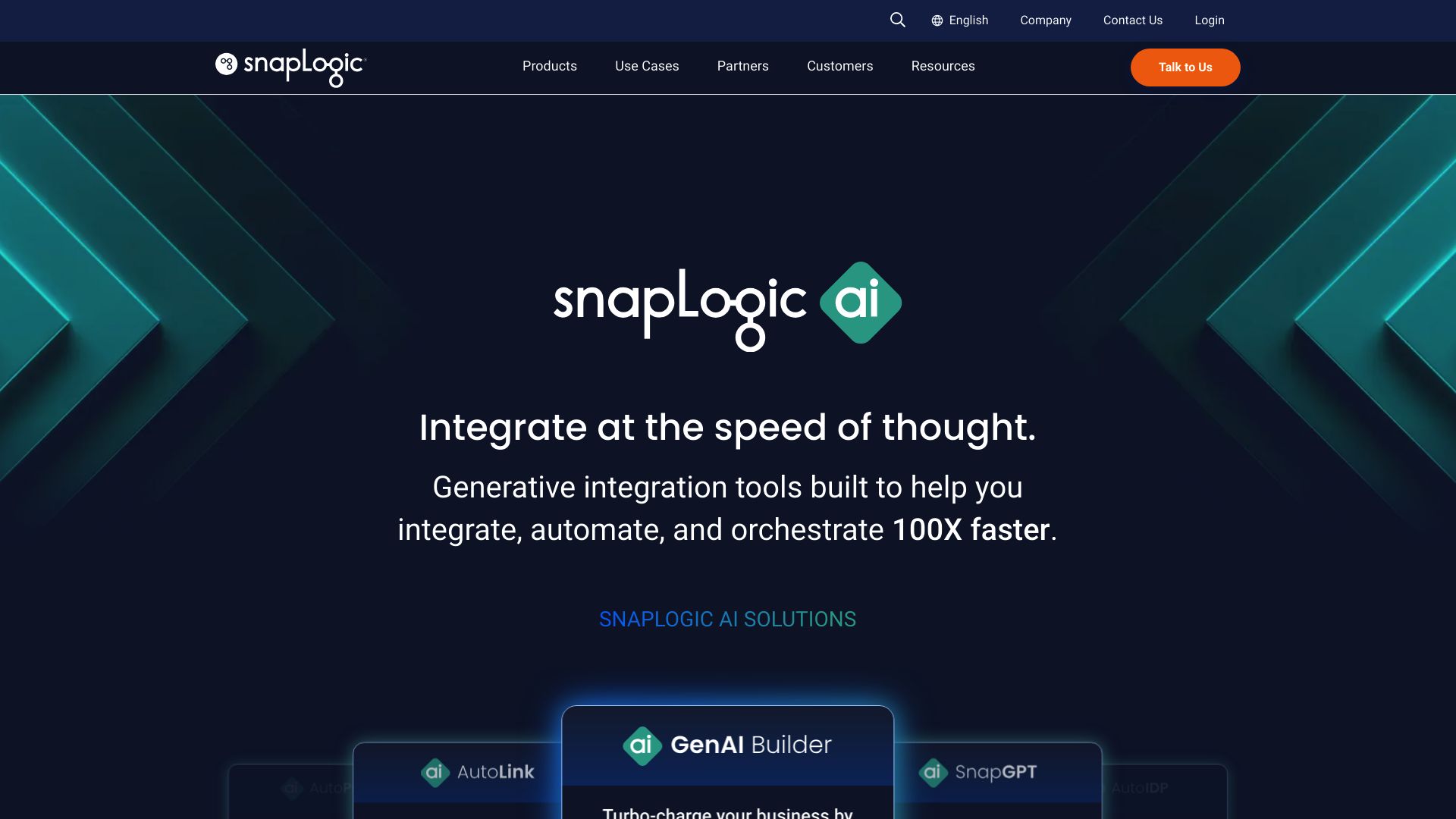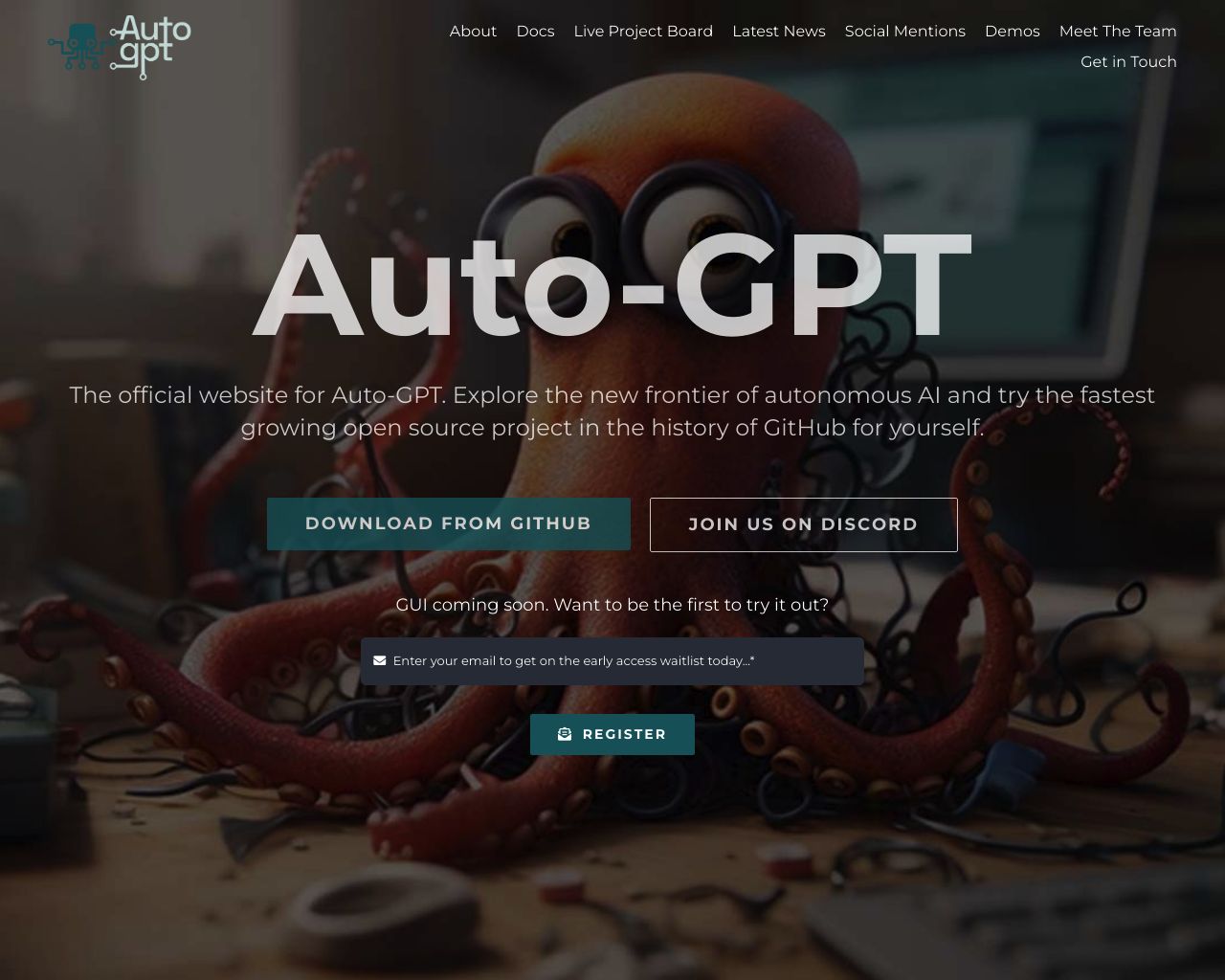SnapLogic AI vs. AutoGPT: Comparing Enterprise AI Solutions
Artificial intelligence reshapes how businesses operate, innovate, and compete. As enterprises seek powerful yet accessible AI solutions, three platforms stand out: SnapLogic AI vs. AutoGPT, and SmythOS. This comparison explores their unique approaches to AI-driven automation and integration. SnapLogic AI streamlines enterprise data integration with its Intelligent Integration Platform.
AutoGPT pushes boundaries with autonomous AI agents for complex problem-solving. SmythOS combines these strengths while addressing limitations, offering a comprehensive solution for businesses of all sizes. Discover how each platform tackles challenges in data processing, security, and scalability, and learn which emerges as the superior choice for harnessing AI’s full potential.
snapLogic AI Overview
SnapLogic AI transforms enterprise data integration with its Intelligent Integration Platform (IIP). This AI-powered solution streamlines the entire lifecycle of IT integration projects, from design to maintenance, across on-premises, cloud, and hybrid environments.


SnapLogic AI leverages advanced artificial intelligence to automate integration tasks, significantly reducing time and effort for IT projects. The platform’s Iris AI technology offers intelligent recommendations for building data pipelines with high accuracy, empowering both expert integrators and citizen developers to manage complex integration projects efficiently.
SnapLogic AI leverages advanced artificial intelligence to automate integration tasks, significantly reducing time and effort for IT projects.
At the core of SnapLogic’s offering is a self-service interface with an HTML5-based, user-friendly design. This interface supports a wide range of users, from business analysts to IT professionals, enabling them to create and manage integrations without extensive coding knowledge. The platform’s comprehensive integration support handles various data types and sources, including structured and unstructured data, as well as batch, real-time, and streaming data.
SnapLogic’s scalability stands out as a key feature. By leveraging Amazon’s Elastic Compute Cloud (EC2) infrastructure, the platform scales integration processes according to enterprise needs, whether in the cloud or on-premises. This elastic integration optimizes computing power consumption and data proximity, ensuring efficient resource utilization.
The introduction of SnapGPT and GenAI Builder marks SnapLogic’s commitment to pushing the boundaries of AI integration. These tools enable no-code development of AI applications, allowing employees to create AI models and chatbots using natural language prompts. This democratization of AI development aligns with SnapLogic’s vision of simplifying enterprise system integration and accelerating digital transformation across organizations.
SnapGPT and GenAI Builder… enable no-code development of AI applications, allowing employees to create AI models and chatbots using natural language prompts.
While SnapLogic offers a robust set of features, users should consider potential challenges such as the learning curve associated with its comprehensive toolset and the need for careful planning to fully leverage its capabilities. The platform’s effectiveness ultimately depends on proper implementation and alignment with specific organizational needs.
AutoGPT Overview
AutoGPT revolutionizes AI development with its open-source platform for creating autonomous AI agents. Developed by Toran Bruce Richards and released by Significant Gravitas Ltd. in March 2023, AutoGPT harnesses OpenAI’s GPT-4 to perform complex tasks without constant human input.
Unlike traditional AI models, AutoGPT breaks down large tasks into manageable subtasks, maintains short-term memory for context, and retrieves up-to-date information from the internet. This autonomous functionality opens doors for applications in software development, business operations, market research, and content creation.
AutoGPT revolutionizes AI development with its open-source platform for creating autonomous AI agents… harnesses OpenAI’s GPT-4 to perform complex tasks without constant human input.


AutoGPT stands out with its ability to debug and improve its own code, manage files for better data structure, and handle both text and image inputs. Developers have leveraged these capabilities to create specialized agents like ChefGPT for recipe generation and ChaosGPT for testing destructive scenarios.
While AutoGPT pushes the boundaries of autonomous AI, it faces challenges. The platform can be prone to errors from self-feedback, hallucinations, and high operational costs due to its recursive nature. It may also struggle with infinite loops and lacks long-term memory, which can impact performance in extended tasks.
AutoGPT stands out with its ability to debug and improve its own code, manage files for better data structure, and handle both text and image inputs.
AutoGPT’s vision aligns with the pursuit of artificial general intelligence (AGI), aiming to create AI capable of human-level intellectual tasks. Its autonomous decision-making and execution capabilities set it apart from models like ChatGPT that require continuous human prompts. As an open-source project, AutoGPT offers a glimpse into the future of AI agents, attracting significant attention from the tech community and investors alike.
Feature Comparison
SnapLogic AI and AutoGPT offer distinct approaches to AI-driven automation, with notable feature gaps in core components and security. SnapLogic AI excels in enterprise-grade integration, providing a comprehensive platform for connecting various data sources and applications. Its visual builder and no-code options make it accessible to both technical and non-technical users. However, AutoGPT stands out with its focus on autonomous AI agents capable of complex problem-solving without constant human input.
In terms of core components, SnapLogic AI offers robust data processing capabilities, including support for data lakes and a wide range of file formats. AutoGPT, while powerful in natural language processing and task decomposition, lacks some of the structured data handling features that SnapLogic AI provides. This gap is particularly evident in SnapLogic AI’s ability to handle diverse data types and sources, which is crucial for enterprise-level integrations.
Regarding security, SnapLogic AI demonstrates a clear advantage with its comprehensive security features, including data encryption, OAuth support, and IP control. AutoGPT, being primarily focused on AI agent autonomy, has less developed security measures in comparison. This security gap could be a significant consideration for organizations dealing with sensitive data or operating in regulated industries.
Feature Comparison Table
| snapLogic AI | AutoGPT | SmythOS | |
|---|---|---|---|
| CORE FEATURES | |||
| Hosted Agents (Dev, Production) | ✅ | ❌ | ✅ |
| Memory & Context | ❌ | ✅ | ✅ |
| Explainability & Transparency | ✅ | ❌ | ✅ |
| Audit Logs for Analytics | ✅ | ❌ | ✅ |
| Agent Work Scheduler | ✅ | ❌ | ✅ |
| SECURITY | |||
| Constrained Alignment | ✅ | ❌ | ✅ |
| IP Control | ✅ | ❌ | ✅ |
| COMPONENTS | |||
| Foundation AIs | ❌ | ✅ | ✅ |
| Huggingface AIs | ❌ | ✅ | ✅ |
| Zapier APIs | ❌ | ✅ | ✅ |
| Classifiers | ❌ | ✅ | ✅ |
| Data Lakes | ✅ | ❌ | ✅ |
| DEPLOYMENT OPTIONS (EMBODIMENTS) | |||
| Staging Domains | ❌ | ❌ | ✅ |
| Production Domains | ❌ | ❌ | ✅ |
| Deploy as Site Chat | ❌ | ✅ | ✅ |
| Deploy as Scheduled Agent | ✅ | ❌ | ✅ |
| Deploy as GPT | ❌ | ✅ | ✅ |
| DATA LAKE SUPPORT | |||
| Hosted Vector Database | ❌ | ❌ | ✅ |
| Sitemap Crawler | ❌ | ❌ | ✅ |
| YouTube Transcript Crawler | ❌ | ❌ | ✅ |
| URL Crawler | ❌ | ✅ | ✅ |
Best Alternative to snapLogic AI and AutoGPT
SmythOS emerges as the superior alternative to snapLogic AI and AutoGPT, offering a comprehensive AI automation platform that combines ease of use with powerful features. We designed SmythOS to streamline the creation and deployment of AI agents, making advanced AI capabilities accessible to users of all skill levels.
Our platform’s intuitive drag-and-drop interface allows users to build complex AI workflows without extensive coding knowledge. This visual approach to agent creation sets SmythOS apart from both snapLogic AI and AutoGPT, enabling rapid development and iteration of AI solutions. With our pre-built API integrations and templates, users can quickly connect to various data sources and services, significantly reducing setup time and accelerating innovation.
SmythOS emerges as the superior alternative to snapLogic AI and AutoGPT, offering a comprehensive AI automation platform that combines ease of use with powerful features.
SmythOS excels in its ability to support multi-agent systems, enabling teams of AI agents to collaborate on complex tasks. This feature enhances the efficiency and scalability of AI implementations, surpassing the capabilities of both snapLogic AI and AutoGPT. Our platform also offers versatile deployment options, allowing users to integrate AI solutions seamlessly into existing systems across various platforms, including Google Vertex, Microsoft Copilot, and Amazon Web Services Bedrock.
Unlike snapLogic AI and AutoGPT, SmythOS provides a comprehensive suite of security features, including data encryption, OAuth support, and IP control. This robust security framework makes SmythOS an ideal choice for organizations dealing with sensitive data or operating in regulated industries. Additionally, our platform’s scalability and enterprise-grade performance ensure that AI solutions can grow alongside business needs, outpacing the limitations of both snapLogic AI and AutoGPT.
By choosing SmythOS, users gain access to a cutting-edge AI operating system that enables the creation, deployment, and management of AI agents with unparalleled speed and efficiency. Our vision to democratize AI and drive innovation across industries positions SmythOS as the clear leader in the field of AI automation platforms, offering superior functionality and user experience compared to snapLogic AI and AutoGPT.
SmythOS excels in its ability to support multi-agent systems, enabling teams of AI agents to collaborate on complex tasks.
Conclusion
SnapLogic AI, AutoGPT, and SmythOS each offer unique approaches to AI-driven automation and integration. SnapLogic AI excels in enterprise-grade data integration with its user-friendly interface and comprehensive support for various data types. AutoGPT pushes the boundaries of autonomous AI agents, capable of complex problem-solving without constant human input. However, SmythOS emerges as the superior choice, combining the strengths of both platforms while addressing their limitations.
SmythOS stands out with its intuitive drag-and-drop interface, extensive integration ecosystem, and versatile deployment options. Our platform supports the creation of multi-agent systems, enabling teams of AI agents to collaborate on complex tasks. This feature enhances efficiency and scalability, surpassing the capabilities of both SnapLogic AI and AutoGPT.
While SnapLogic AI and AutoGPT have their merits, SmythOS offers a more comprehensive solution for businesses looking to harness the full potential of AI. Our platform’s ability to integrate with various AI models, APIs, and data sources, coupled with its robust security features and scalability, makes it the ideal choice for organizations of all sizes.
Experience the future of AI-powered automation with SmythOS. Create a free account today and discover how our platform can revolutionize your workflow. With our extensive library of AI agent templates and seamless deployment options, you’ll be able to create and implement AI solutions 99% faster than traditional methods. Don’t just adapt to the AI revolution – lead it with SmythOS.
Last updated:
Disclaimer: The information presented in this article is for general informational purposes only and is provided as is. While we strive to keep the content up-to-date and accurate, we make no representations or warranties of any kind, express or implied, about the completeness, accuracy, reliability, suitability, or availability of the information contained in this article.
Any reliance you place on such information is strictly at your own risk. We reserve the right to make additions, deletions, or modifications to the contents of this article at any time without prior notice.
In no event will we be liable for any loss or damage including without limitation, indirect or consequential loss or damage, or any loss or damage whatsoever arising from loss of data, profits, or any other loss not specified herein arising out of, or in connection with, the use of this article.
Despite our best efforts, this article may contain oversights, errors, or omissions. If you notice any inaccuracies or have concerns about the content, please report them through our content feedback form. Your input helps us maintain the quality and reliability of our information.
